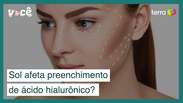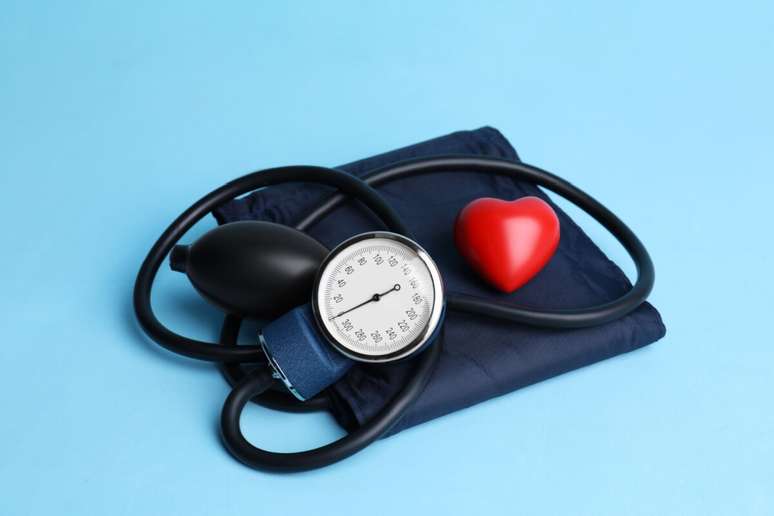The risks of exposure to the excessive and unprotected sun includes imperfections and merger face, with loss of facial structure
Summary
The filling of hyaluronic acid is popular, but sun exposure can affect the duration of the procedure.
-
Frequent

Does exposure to the sun affects the filling of hyaluronic acid?
-
Frequent

Pope Francis is stable, but goes to a critical condition, says the Vatican
-
Frequent

The Minister of Health is electrified and asks for a minute of silence in prayer for the health of Pope Francis
The filling of hyaluronic acid is still a very sought -after procedure in medical offices and allows you to return the structuring to the face or provide proportionality to the face. But in the hot season, even knowing the safety of the procedure, many people still have doubts that exposure to the sun somehow affects the filling of hyaluronic acid and which influences how? – But the answer is not so simple.
“One of the recommendations after filling hyaluronic acid is to avoid exposure to the excessive sun and protect the skin. We ask this not to increase the inflammatory process caused by injectable. But if the sun is able to degrade the hyaluronic acid it is filled, we still have few scientific data on the subject “, says the dermatologist Paola PomerantzeffMember of the Brazilian Society of Dermatology.
The doctor explains that hyaluronic acid is a natural substance already found on the skin that keeps it filled and hydrated. The dermal fillings of hyaluronic acid are injected into the dermis and treat a series of problems, including wrinkles, thinning of the lips, thin lines around the mouth, loss of volume under the eyes and the back of the hands and nasolabial grooves, among the others. Although the results and longevity vary according to the injection site and the characteristics of the patient, they usually last between six and 12 months.
“Although the injectable hyaluronic acid mopeds as a hyaluronic acid produced naturally by the body itself, there are small differences between the two. The skin fills use chemically modified hyaluronic acid to last longer in the body. Different types of hyaluronic acid filling have other characteristics and usually differ in the size of the particles depending on the expected use “, explains Paola.
“When we expose the skin to direct sunlight, UV rays can penetrate the dermis and, with sufficient exposure, break the stocks of natural hyaluronic acid,” he adds.
With the popularity of the filling based on hyaluronic acid, it is not exaggerated to deduce that excessive exposure to the sun can cause the dissolution of the skin fills, breaking their hyaluronic acid. “But this is a more complex answer,” says the doctor.
Consent on the effects of exposure to the sun on filling treatments is missing. And one of the factors that explain this is related to the term “exposure to the sun” itself. “Obviously, we know that exposure to UV rays usually degraded collagen, elastin and hyaluronic acid, but how much exposure would it be necessary to degrade the filling? Or how many hours of intense exposure to the sun are necessary to really make the difference? There is no specific duration of exposure to the sun which universally triggers the degradation of hyaluronic acid. This varies from person to person. But in any case it is a recommendation to protect the skin, with the application and re -applying of the photoprotective and avoid exposing yourself for hours and hours, “says Paola.
But if there is no conclusive tests to be said, how many exposure to the sun will cause the degradation of hyaluronic acid and if this is sufficient to influence the filling, so because patients are recommended to limit exposure to the sun in the first weeks after treatment with filling?
“This is not so much of the filling itself, but the injection and response of the body to this injection. There are precautions relating to the sun exposure that must be followed after filling the face. Some facial injections can cause bruises and swelling, which can produce inflammations if exposed to the sun too early.
Prolonged exposure to the sun after injection (usually within the two -week healing period) increases the risk of inflammation and swelling, prolongs the duration of the bruises and can cause residual hyperpigmentation at the injection point, the account of Paola Pomerantzeff . “In other words, exposure to the sun negatively affects healing and increases the risk of complications. It is better to avoid, “he says.
The doctor, however, underlines that exposure to UV rays is harmful and will not be useful, thus degrading whether or not to fill, it is not all at stake: “We can lose collagen, which helps to stop the body, due to the ‘excessive exposure sun. In addition to hyperpigmentation (coloring) the skin. Especially if you have invested in face or body procedures, use sun protection, make sure it is wide, avoid the sun and reapply the product. Prevention is always the best way, “he concludes.
It inspires the transformation into the world of work, business, society. It is the creation of the compass, content and the connection agency.
Source: Terra
Ben Stock is a lifestyle journalist and author at Gossipify. He writes about topics such as health, wellness, travel, food and home decor. He provides practical advice and inspiration to improve well-being, keeps readers up to date with latest lifestyle news and trends, known for his engaging writing style, in-depth analysis and unique perspectives.





-1iukdqb6yt84h.jpg)



